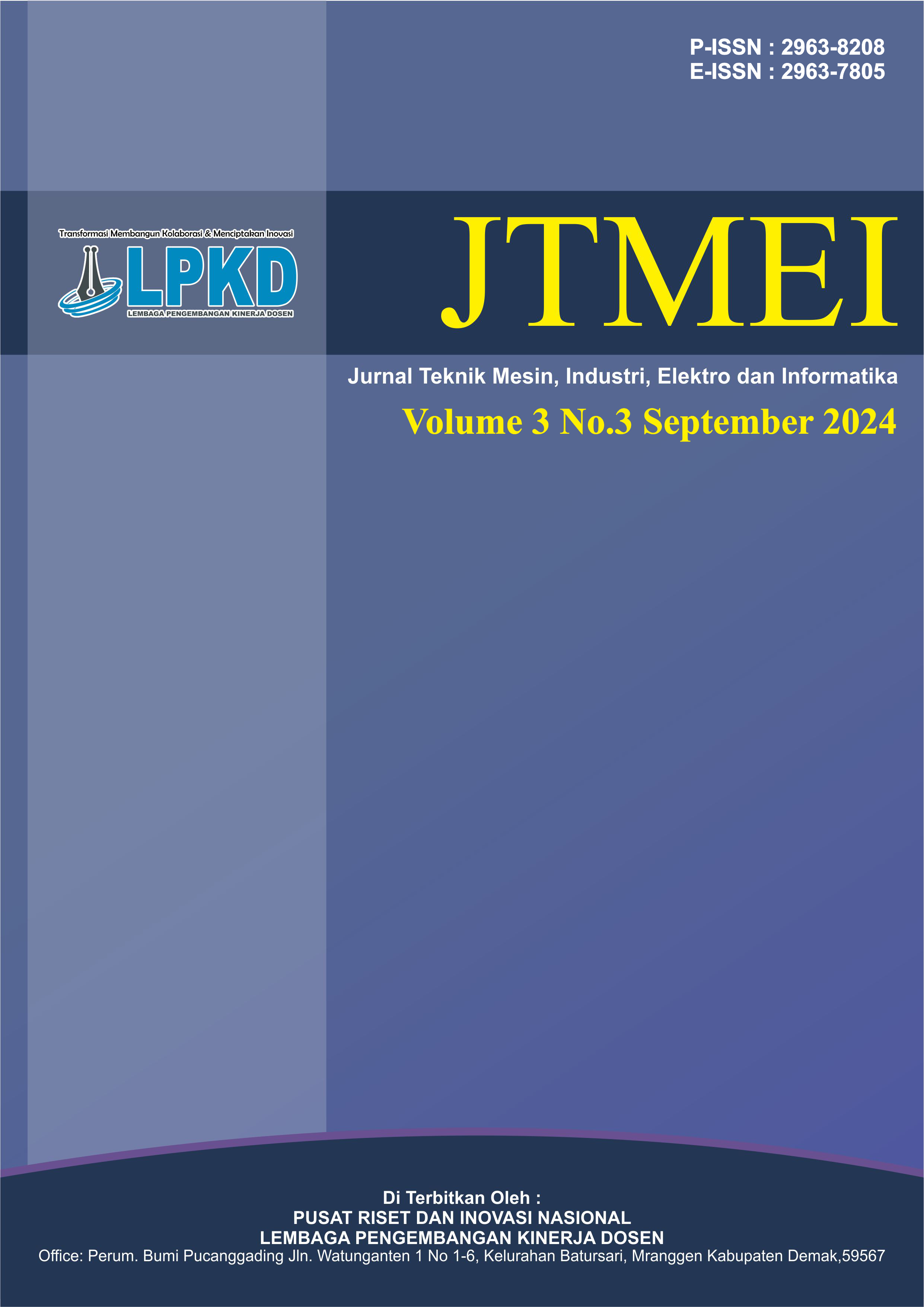Pengaruh Modifikasi Permukaan Piston terhadap Emisi Gas Buang Motor Bakar Kapasitas 100 cc
DOI:
https://doi.org/10.55606/jtmei.v3i3.4108Keywords:
exhaust gas, standard piston, high dome piston, Ron 90 fuelAbstract
Technological advances in motorized transportation are progressing rapidly, making motorized vehicles the main mode of transportation. The increasing number of motorized vehicles in society results in a significant increase in exhaust emissions. Combustion in vehicle engines is not always perfect, producing exhaust gases containing compounds harmful to human health, such as carbon monoxide (CO), hydrocarbons (HC), carbon dioxide (CO2), and nitrogen oxides (NOx). This study investigates the effect of variations in piston dome shape on exhaust emissions in a 100cc internal combustion engine using RON 90 fuel. The goal is to find the optimal compression ratio to produce cleaner exhaust emissions. The research data are presented in tabular form and analyzed using one-way ANOVA and graphs. The results showed a significant reduction in CO and HC emissions at all engine speeds (1000, 2000, 4000, and 5000 rpm) with variations in piston dome shape. The reduction in CO emissions ranged from 55.07% to 85.73%, while the reduction in HC emissions ranged from 54.14% to 86.10%. These results suggest that variations in piston dome shape can be an effective solution to minimize harmful exhaust emissions in internal combustion engines.
Downloads
References
Amalia, R. D. (2017). Strategi pengendalian pencemaran gas CO dari aktivitas transportasi di Kota Batu, Jawa Timur (PhD Thesis). Institut Teknologi Sepuluh Nopember.
Badan Pusat Statistik. (2018). Perkembangan jumlah kendaraan bermotor menurut jenis, 1949-2018.
Galih. (2018). Analysis of effect the piston model exhaust emissions on four step gasoline motors. Kediri: Universitas Nusantara Kediri.
Ifnu Taufik Indrawan. (2014). Pengaruh rasio kompresi terhadap emisi gas buang CO dan HC dengan bahan bakar liquefied petroleum gas pada sepeda motor Yamaha Jupiter Z 110 cc. Surakarta: Universitas Sebelas Maret.
Khatami, M., Sujatmiko, A., & Asrori, A. (2023). An analysis of emission exhaust gas on 4-stroke engine based on IoT gas analyzer. LOGIC: Jurnal Rancang Bangun dan Teknologi, 23(2), 101–110.
Srikandi, F. (1992). Polusi air dan udara. Yogyakarta: Kanisius.
Sutiman. (2005). Sistem pengapian elektronik. Jakarta: PT. Citra Aji Parama.
Swisscontact. (1998). Emisi gas buang. Jakarta: Airlangga.
Warju, Harto, S. P., & Soenarto. (2018). The performance of chrome-coated copper as metallic catalytic converter to reduce exhaust gas emissions from spark-ignition engine. IOP Conference Series: Materials Science and Engineering, 288, 1–15.
Winarto, E. (2013). Pengaruh bahan bakar premium, pertamax, pertamax plus dan variasi rasio kompresi terhadap kadar emisi gas buang CO dan HC pada Suzuki Shogun FL 125 tahun 2007. Surakarta: Universitas Sebelas Maret.
Wisesa, Amin, Alwi. (2015). Pengaruh peningkatan perbandingan kompresi terhadap emisi gas buang kendaraan sepeda motor Honda Blade 110 cc. Padang: Universitas Negeri Padang.
Downloads
Published
How to Cite
Issue
Section
License
Copyright (c) 2024 Jurnal Teknik Mesin, Industri, Elektro dan Informatika

This work is licensed under a Creative Commons Attribution-ShareAlike 4.0 International License.








